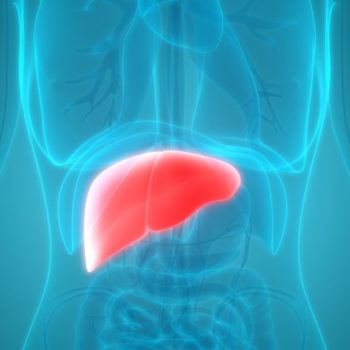Much has been said and written about the controversial relationship between alcohol consumption and health. Many people adhere to the theory that a glass of wine a day brings significant health benefits. However, new research suggests that even moderate alcohol consumption may have a negative impact on our brain. We talk about this topic with Dr. Roberto Ceriani, head of the Hepatology Day Hospital and Interventional Hepatology department.
Data published in the British Medical Journal
The study, which was carried out as part of a wider study on the subject of ageing, examined the consumption of alcohol by a number of people over 30 years of life, calculating the average weekly consumption. The brain structure and thinking capacity of the participants were examined and they underwent a series of scans and memory tests.
Increased alcohol consumption was directly associated with difficulty finding words (aphasia) but above all with a higher risk of “contraction” of the brain, a phenomenon associated with Alzheimer’s disease.
According to James Leverenz, a Cleveland Clinic physician, the chemical imbalance that alcohol produces in the body could have an impact on brain function. It is still unclear to what extent moderate drinking of alcoholic beverages is good or bad for the body: what is clear is that drinking immoderately can have proven negative effects. Thus, the social component of alcohol and the right quantities.
What is good for the heart is generally good for the brain. The socializing and aggregating component of alcohol, provided it is consumed moderately, is not in question. However, it remains to be seen how alcohol consumed in small doses can have a positive impact on people’s health.
“From epidemiological evidence, the suggested safe limit of alcohol intake was defined as 21 units per week in men and 14 units in women who have no other chronic liver disease – explained the specialist, specifying that a unit in Europe is defined as equivalent to 9.8 g ethanol, i.e. a glass of wine, a can of beer or a small spirit. Some suggest a lower threshold for women of about 7 units per week. A higher risk of liver damage may, however, be associated with the racial and ethnic heritage of the individual. Alcohol cirrhosis rates are higher in African American and Hispanic males than in Caucasian males and mortality rates are higher in Hispanic males. However, these differences do not seem to be related to differences in the quantities of alcohol consumed.
Risks and consequences of abuse
Alcohol is one of the most commonly abused substances. Chronic ethanol consumption is the cause of many chronic diseases and conditions globally. The mechanism that determines liver damage has been extensively studied, while, there are fewer studies that have examined the mechanisms that determine damage to other organs such as the heart and central nervous system. For the latter, it is well documented that heavy alcohol consumption causes a series of degenerative diseases.
“There are different ways of consumption that determine the degree of brain disease due to alcohol: – continued Dr. Ceriani – the frequency with which a person drinks, the quantity, duration of consumption, family history, prenatal exposure to alcohol, the genetic background and the general state of health of the drinker. The “reduction”, the “narrowing” of the brain is in any case a common sign of brain damage from alcohol. Alcohol consumption causes memory damage and reduces learning ability.
Korsakoff syndrome (KS) is a neurological complication that arises in chronic alcoholics
In this syndrome, the patient has memory loss, does not remember daily activity shortly after its occurrence, so it is stuck in old memories due to a deficiency of thiamine (Vitamin B1). Alcohol abuse causes Thiamine deficiency because it affects the breakdown of vitamin in the body, in these patients most thiamine is not absorbed.
High alcohol consumption and thiamine deficiency can cause brain damage, which results in amnesia, without affecting long-term memory, intelligence, and memories formed before the development of the disease.
Teenagers and women among the categories most at risk
Women are more vulnerable because they are more susceptible to alcohol-related harm
Alcohol damages the cerebellum as well as the brain, causing loss of muscle coordination with staggering gait and loss of balance and the peripheral nervous system resulting in neuropathy with numbness and weakness in the hands and feet.
In addition, there is clear evidence that exposure to alcohol during the intrauterine mental development stages causes devastating selective neuronal damage with consequent deep CNS deficiency. “The consistency of this disorder – explained the specialist – is compromised by the duration and frequency of exposure to ethanol during gestational life. There is strong evidence that during prenatal development, exposure to alcohol has negative consequences, however, the causes of ethanol-induced neurodegeneration are poorly understood. Alcohol has also been linked to hyper-inflammation and death of neuronal cells. Chronic abuse affects the integrity of the blood-brain barrier, increasing the flow of proinflammatory mediators and leukocytes into the brain.
Abnormal growth patterns have also been demonstrated in young people who have started and continue to drink a lot, while the question of moderate alcohol consumption levels is unresolved whether or not they can interfere with normal brain development: drinking during adolescence interrupts normal brain development and causes loss of grey matter, reduced growth of white matter or both. The influence of alcohol on the structural development of the brain is significant for the frontal regions, which are among the last to mature.
Last but not least, it is important to underline that alcohol-related brain damage has a serious social impact because these people have disorders associated with the development of maturity, difficulty in solving problems, making decisions, making critical judgments, having adequate social behavior, inhibiting inappropriate behavior.







